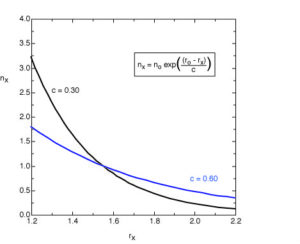Bond Order Formula
Chemistry deals with the way during which subatomic particles bond together to make atoms. In molecular orbital theory, bond order plays a really important role to find bond strength and also utilized in valence bond theory. Bond order may be a measurement of the number of electrons involved in bonds between two atoms during a molecule. It’s used as an indicator of the stability of a bond. During this article, we’ll discuss the concept of bond order and bond order formula.
Concept of Bond Order
Linus Pauling introduced the bond order concept. It’s defined because of the difference between the number of bonds and anti-bonds. The bond number itself is the number of electron pairs between a pair of atoms. Usually, the upper the bond order, the stronger the bond. Most of the time, bond order is adequate for the number of bonds between two atoms. Exceptions occur when the molecule contains antibonding orbitals.

Bond order is the number of chemical bonds between a pair of atoms. For instance, in diatomic nitrogen (N≡N), the bond order is 3, while in acetylene (H−C≡C−H), the bond order between the 2 carbon atoms is 3 and therefore the C−H bond order is 1. The Bond order indicates the steadiness of a bond. Bond order doesn’t get to be an integer.
Bond order is additionally defined because of the difference, divided by two, between the amount of bonding and antibonding electrons in molecular orbital theory; this often, but not always, yields an equivalent result. Bond order is additionally an index of bond strength, and it’s used extensively in valence bond theory.
The bond order concept utilized in molecular dynamics and bond order potentials. The magnitude of the bond order is related to the bond length. Bond length is defined because of the distance between the centres of two covalently bonded atoms. Generally, the length of the bond between two atoms is approximately the sum of the covalent radii of the 2 atoms.
Bond Order Formula
Bond order = [(Bonding molecules’ number of electrons) – (Antibonding molecules’ number of electrons)]/2.
i.e. Bond Order = ½ [Nb – Na]
Where,
- Nb is that the number of bonding electrons
- Na is that the number of antibonding electrons
The Bond Order Formula is often defined as half the difference between the number of electrons in bonding orbitals and antibonding orbitals.
Solved Examples for Bond Order Formula
Q1] Determine the bond order for hydrogen gas, H2. Use Bond Order Formula
Solution: Step 1 – Write the electronic configuration of the Hydrogen atom. The electronic configuration of hydrogen is (σ1s)2
Step 2 – Put the values in the bond order formula, we get
Bond order = 2 – 0 / 2
Therefore, bond order = 1
It means a single covalent bond exists in H2 molecule, and diamagnetic since there is no unpaired electron.
Q2] Determine the bond order for nitronium ion: NO+2
Solution: Step 1- Draw the Lewis Structure.
Step 2 – Count the total number of bonds, The total number of bonds is 4.
Step 3 – Count the number of bond groups between individual atoms. Bond groups between atoms are 2.
Step 4 – Divide the bond groups between individual atoms by the total number of bonds. The bond order is 2.